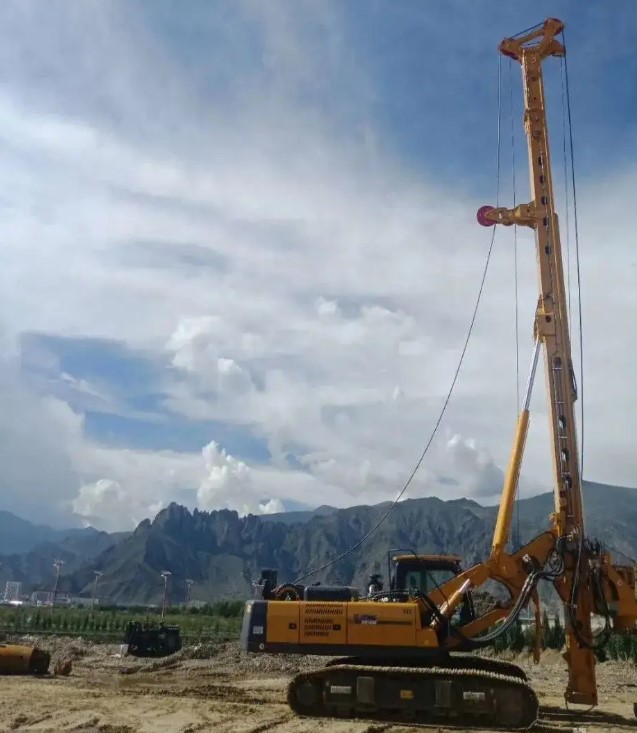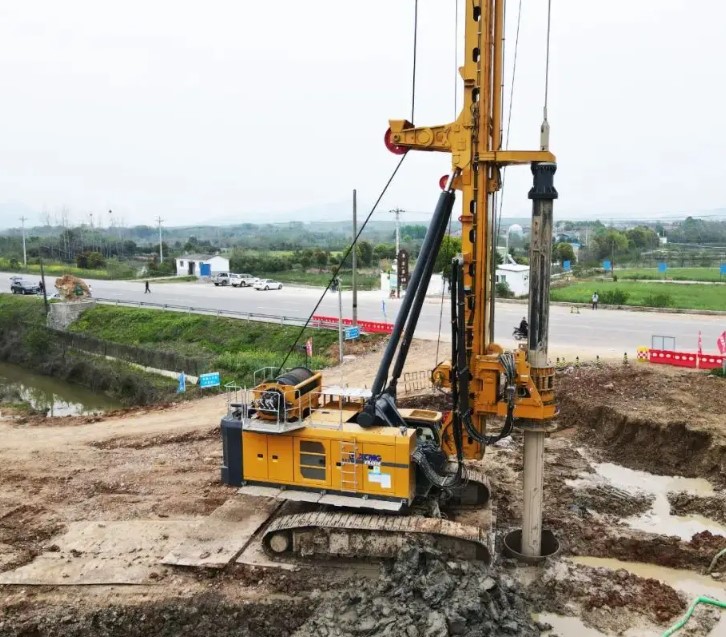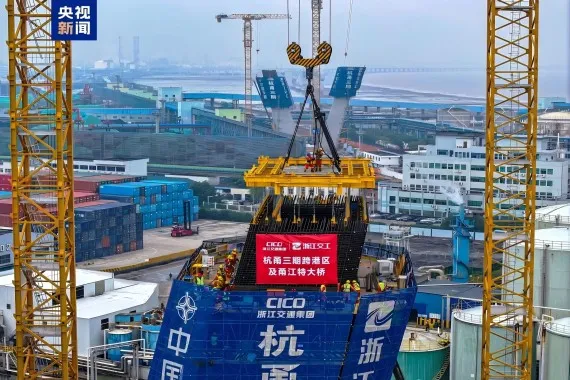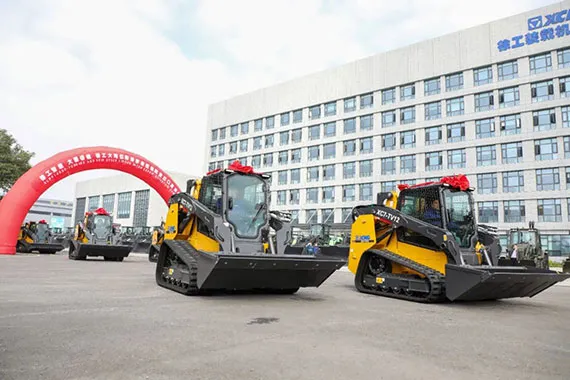Should You Buy New or Used?
In its relatively short lifespan, horizontal
directional drilling has gone from boom to bust and is now making its way back
up again. The used equipment market for drill rigs has followed this cycle.
Although the overseas market is absorbing a large portion, there are still used
units available. So, how do you know if purchasing a used drill rig is a good
idea for your operation?
"Used
units can be a good fit for a contractor who does an occasional bore,"
says Klane Kirby, Aztec Underground.
"Typically, the used buyer is someone who does very few bores a year and
can't justify a new purchase."
Previously owned drill rigs can also be a good fit
for startup contractors with limited funds. "You're able to get in at a
lower cost with a used system," notes Richard Levings at The Ditch Witch organization.
"But some of that depends on if you have the ability to purchase used
support equipment.
"If
you need a certain size unit and you don't have the funds to purchase a totally
new system, then you will have to look at used components within the system,
which include trucks, trailers, vacuum excavators, etc.," he continues.
"The piece of equipment that is purchased used depends on which piece is
available, and affordable."
By
affordable, Levings means you need to evaluate the true costs of the used equipment.
"You don't want to have to turn around and spend a large sum of money to
repair it or bring it up to working condition," he explains. "You
need to evaluate which piece of that system is the least risk. If you have
limited funds and spend all your money on that system, you don't have any cash
to cash flow the business or make repairs you didn't foresee."

What to watch for when buying used
If you're considering purchasing a used directional drill, evaluate the
following areas.
Hours
? The average life of a drill rig is about 5,000 hours before major components
will start to wear out. "Don't buy a drill with 4,000 hours and expect it
to run like new," says Levings. "Major components will begin to wear
out at that level. Usually, contractors are starting to trade in machines at
those hours because maintenance costs are beginning to rise. But be aware, you
can see some drills at 2,500 hours that are completely worn out."
Drill
pipe ? Drill rod is an expensive item to replace. In the case of a mid-size drill,
replacement pipe could cost $15,000, says Kirby.
Yet,
buying used drill pipe can be risky. It only takes one really bad bore to ruin
drill pipe, and the damage isn't always visible. For example, if a new string
of drill pipe is severely over bent, it may not show up as a permanent bend,
but it will severely weaken the pipe and shorten its life. "Drill pipe is
something you need to be leery of buying used, regardless of its age,"
Levings states.
Look
at the thread condition. Measure the outside diameter of the drill pipe and
compare it to a new joint. Look for scores and check to see if it's straight.
"You
may want to just replace the drill stem and not take a chance on it," says
Kirby. "You could lose a lot of money down the hole if you have faulty drill
pipe."
Breakout
system (hydraulic wrenches/vises) ? Make sure the breakout system isn't worn
out or loose. When you activate it, it should provide a firm, tight fit.
"You don't want any play in it," says Marv Klein, Vermeer,"If
it's loose, it's time to replace it."
Drill
rack ? On older designs with a chain drive system, look for chain wear and
check the tension. For newer models equipped with a rack and pinion system,
look for wear in the rack gear or pinion gear.
Operator
station ? Make sure the controls move properly and aren't loose or sloppy.
Check to see that the operator gauges are in working order. "If they're
broken, you won't have the tools to properly operate the drill," says
Klein.
Undercarriage
and tracks ? The entire drill rig can be immobilized if the undercarriage
system isn't working properly or is in bad condition, says Klein. It's also one
of the most expensive components to repair.
Look
for wear on sprocket teeth and track rollers and check to ensure they aren't
loose. With rubber tracks, check for gouges, cuts, etc. For steel track, check
for rust and pitting.
Hydraulic
system - Leaks may be difficult to see, since the drill rig will likely have
been cleaned prior to sale. So look at the condition of the hoses to see if
they're worn and weather beaten. If possible, have the drill evaluated by a
dealer to check pressures.
Electrical
system - Look for patches and rewiring. Check all functions to make sure they
work.
Overall
appearance - Drilling fluid is very hard on paint. While some wear is normal,
all-over corrosion is an indication that the rig has not been well maintained.
In addition, check the condition of the pipe boxes, check for missing covers,
etc.
"If
the machine is beat up, guards are missing and hoses are worn, you get a
general sense that the previous owners didn't take care of it or maintain
it," says Levings.
More information is better
It's also important to find out where the unit has been used.
"If
it's coming out of an area that has a lot of rocks, that certainly should send
up a red flag," says Levings. "That doesn't mean you shouldn't buy
it; just be aware it has been running in difficult conditions. Many units are
sold on the Internet by a picture and description. Keep in mind people trying
to sell them are trying to get rid of them."
It's
also important to obtain maintenance records, if possible. "You need to be
aware of what you're walking into," says Kirby. "That doesn't mean
you can't buy a used unit, go out and do a bore and make money with it. But you
do have to know what to look for."
This
is where buying from a dealer can be an advantage. "With a dealer, you may
get some warranty," says Levings. "We have dealers that rebuild
drills, so a lot of the components may have been inspected and replaced.
"Going
through a dealer usually costs more," he admits. "But when you're
buying from an individual, you're stuck with what you have. Repair costs are
the responsibility of the buyer and, in the end, you may pay more than what the
dealer is asking."

New units offer more guarantees
Buying a new directional drill will obviously require a more substantial
capital investment than buying used. Yet, you need to weigh the benefits
against the added cost.
With
new drills, most manufacturers offer at least a one-year warranty, typically
with the option to buy extended warranties for coverage up to four years. While
some used drills purchased through a dealer or large auction house may include
a limited warranty, those purchased on the Internet or from an individual are
usually sold "as is."
"Many
times, there's nothing that guarantees the machine is in proper working
order," says Klein. "You don't always know what you're buying. A new
piece of equipment off the production line has been inspected and has met the
production standards of the manufacturer. You're protected in case a problem
exists with the machine after you purchase it."
"You
don't always know the conditions the [used] drill has run in or how much it's
been stressed," adds Kirby. "You can stress drill rod on one bore and
it may not fail. But if you get into a situation where you're stressing it
again, it can break."
Although
a new unit will cost more, it does give you peace of mind, says Levings. "With
used drills, your biggest risk is the drill pipe. Your next biggest risk is
worn components that you can't easily see, such as sprockets, bearings,
hydraulic components, electrical harnesses, etc.," he points out.
"With a new drill, you get a new warranty and peace and comfort that
everything is new. You should be able to go out on day one and be
productive."
Finance
costs are another consideration. "You will probably end up paying a higher
interest rate on a used drill," Levings states. "When finance
companies finance a new piece of equipment, if they have to repossess the unit,
they have something of value. If they're financing a used unit, they're not
certain what they're financing."
After-sale
support should also be kept in mind. While some dealerships may provide support
for used equipment, it's no guarantee. "And it may cost more to do it that
way," says Klein. "When you buy new, the warranty covers parts and
labor, so it's less costly to the customer than if he has to bring a used drill
in to the dealer. In that case, the customer pays for the repair out of his
pocket."
Leading
horizontal directional drill manufacturers also have extensive dealer
organizations to provide support and training.
"Our
dealer organization is there to support customers," says Levings,
"whether that's operational training on the new drill, training about mud
and local ground conditions, knowing what tools to use most effectively, etc.
While these machines are simpler to operate than they were 10 years ago, a drill
is still a specialized piece of equipment. You can't just take anyone off the
street and expect that they will be able to operate it."



















